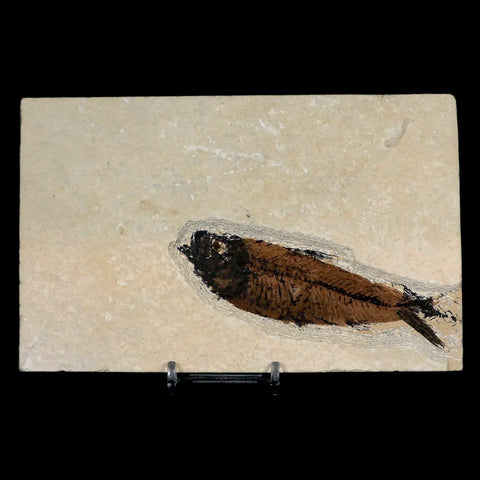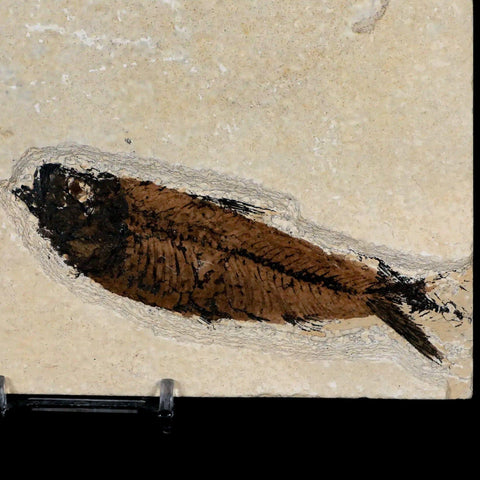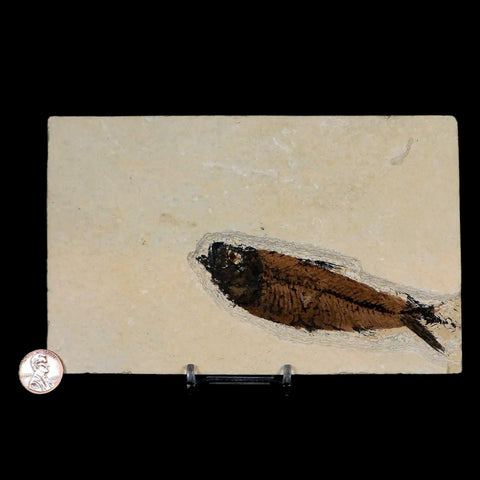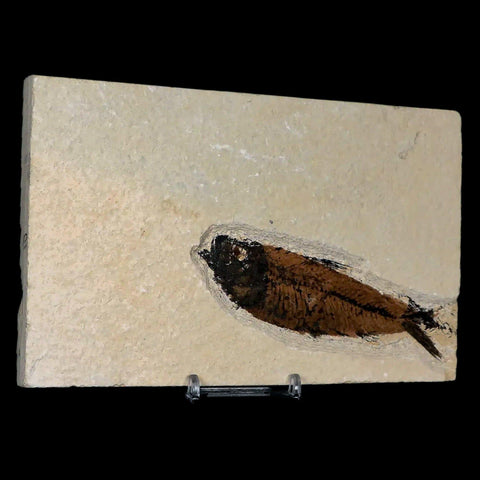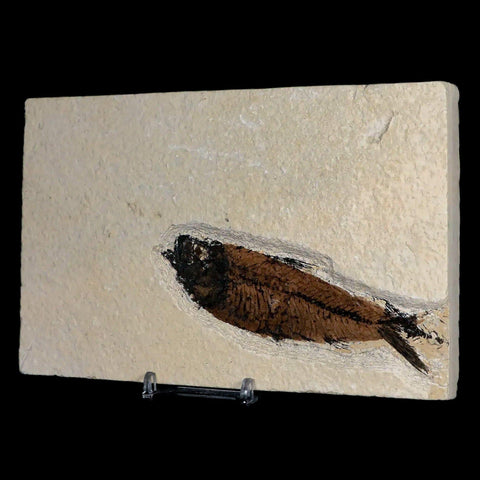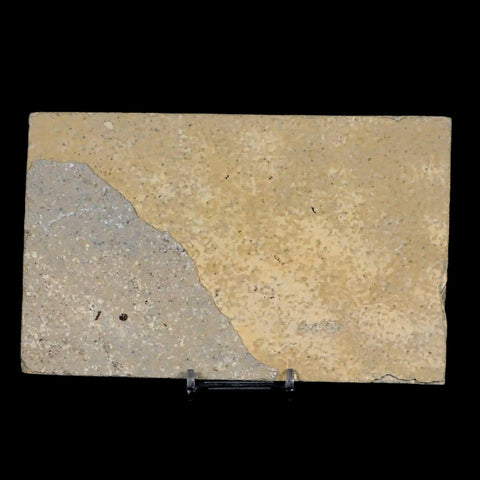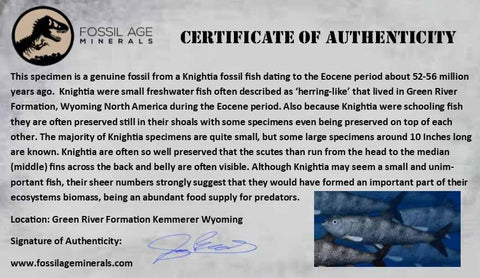XL 4.3" Knightia Eocaena Fossil Fish Green River FM WY Eocene Age COA & Stand
Location: Kemmerer, Wyoming
Weight: 1 Pound 3.6 Ounces
Dimensions: 6.8 Inches Long, 4.2 Inches Wide, 0.6 Inches Thick (Plate)
Fish Dimensions: 4.3 Inches Long, 1.2 Inches Wide
Comes with a Certificate of Authenticity.
Comes with a Free Stand.
The item pictured is the one you will receive.
This is a genuine fossil.
50 million years old, Eocene age
Knightia eocaena is the most common fish found in Fossil Lake and may be the most frequently articulated vertebrate fossil in the world. It is also Wyoming’s State Fossil, reaching lengths of up to 25 cm (10 inches).
Around 50 million years ago, during the Eocene Epoch, Fossil Lake covered what is now southwest Wyoming. At its largest, the lake spanned nearly 930 square miles, though only about 500 square miles of sediment remain today. The central 230-square-mile portion of the lakebed preserves exceptionally fossil-rich sediments, along with ancient deltas, beaches, springs, and nearshore rock formations.
The unique chemistry of Fossil Lake prevented decay and scavenging, allowing organisms to be preserved intact while millimeter-thick layers of limestone slowly accumulated. These laminated deposits contain the highest concentration of fossil fish in the world. Along with other aquatic organisms and preserved geologic features, Fossil Lake provides the most complete Paleogene record of a freshwater lake ecosystem anywhere on Earth.
Since the discovery in the 1870s, many perfectly preserved fossil fish have been recovered. Preserved within the fish in the laminated limestone is a complete aquatic ecosystem, comprising cyanobacteria, plants, insects, crustaceans (such as shrimp, crawfish, and ostracods), amphibians (including a primitive salamander and a frog), alligators, turtles, birds, and mammals, including the oldest known pantolestid (an otter-like animal). The subtropical terrestrial ecosystem surrounding the lake is also represented by rare fossils, including a horse, two snakes, lizards, two bat species, birds, an apatemyid (an arboreal insectivore), a miacod (a primitive carnivore), insects, and more than 325 types of leaves, seeds, and flowers.



